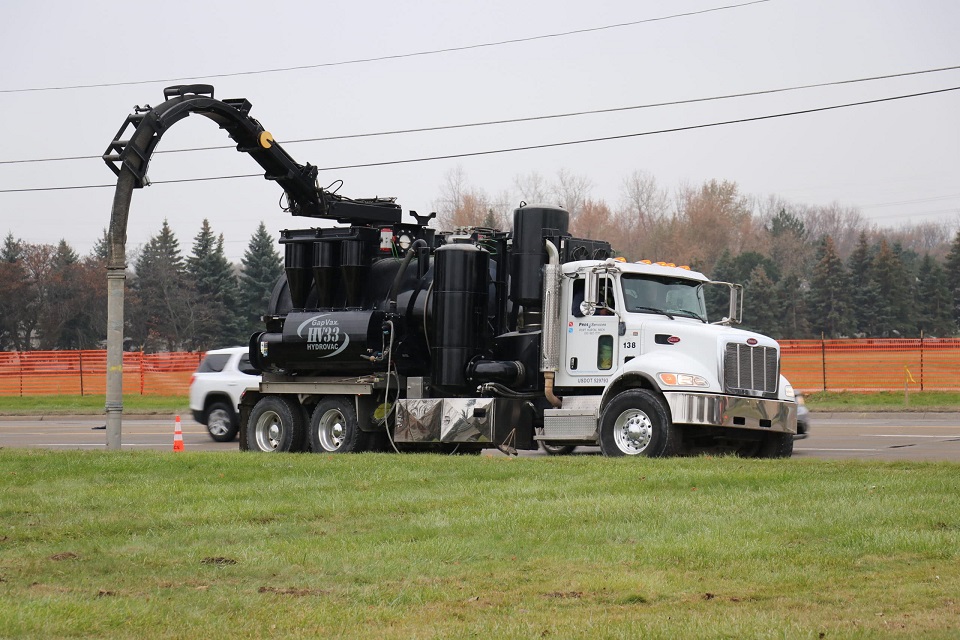Excavation is one of the most dangerous jobs in construction. Traditional equipment like trenchers, backhoes and shovels can cause damage to underground pipes and lines if the proper precautions are not taken. Hydro excavation prevents this type of damage by using a pressurized water jet to loosen dirt and turn it into a slurry that can be easily vacuumed into a disposal tank. This reduces damages, maintenance and repair costs.
Table of Contents
Safety
Using a large vacuum, hydro excavation sucks up dirt slurry as it cuts through the soil. This eliminates the need to have workers move the dirt piles, making cleanup much faster and simpler. This also helps to reduce the risk of damage to underground utility lines and can help to save on costs by preventing gas leaks, which are often caused by traditional digs that disturb the ground too much. Hydrovacs are also safer for your crew than backhoes and manual excavation methods. However, you must be cautious when operating the truck and aware of overhead power lines and other potential hazards. It’s important to perform a video inspection before digging to locate any existing utilities. Additionally, you must mark any current lines with paint or stakes to ensure they aren’t accidentally cut. These steps are necessary to avoid damaging buried utilities, which could be dangerous for your crew and cause costly repairs for you and the customer.
Efficiency
Using hydro excavation allows workers to be more precise when digging. This reduces the chances of hitting underlying utilities, a major concern for many construction projects. This also reduces the amount of soil that needs to be removed, saving on cleanup costs and enabling the project to be finished sooner. Damage to buried pipes, lines and cables is expensive to repair. It can also cause serious disruptions to business operations and increase downtime. Hydro excavation helps to eliminate these problems and reduces the need for repairs by being a non-destructive process. The hydro excavation uses a powerful water jet to loosen and cut dirt. The loosened soil is then vacuumed into a debris tank for disposal. The process can cut through all ground materials, including frozen earth, clay or rocky soil. The equipment can even be equipped with heated water to break up and excavate frozen ground. This makes it possible for construction to be carried out in northern climates and during winter seasons.
Environmentally Friendly
One of the most important advantages of hydro excavation is its environmentally friendly approach to digging. When traditional excavation equipment is used, it can cause soil compaction, which leads to decreased water infiltration, reduced oxygen levels in the soil, and reduced plant growth. Hydro excavation, on the other hand, uses high-pressure water and a vacuum system to remove the debris, which minimizes soil compaction and allows plants and trees to grow better.
Another environmental advantage of hydro excavation is its ability to dig in confined spaces where traditional excavation equipment cannot reach. This helps to reduce the need for costly repairs and restoration once the project is finished.
The hydro excavation also eliminates the risk of hitting sewer lines and other buried pipes during the dig, which can be very costly. This is especially important when daylighting involves uncovering existing underground utilities and determining their location in the ground. It is required by law to call your local utility company before beginning any digging projects, and this will allow them to come out to mark the area where they are buried.
Cost
Hydro excavation is cheaper since there’s no need for a large crew or heavy machinery. The process uses water to loosen soil, and then an air vacuum carries the dirt away, depositing it in a debris tank. This means you don’t have to pay for extra trucking to bring in new soil to fill the holes – which also cuts down on environmental risks, as bringing in dirt from elsewhere contains seeds and organisms that can damage local ecosystems. This method can also be used for line, sign and pole installation and location, potholing, daylighting, and pipe and sewer rehabilitation, eliminating the risk of costly utility line damage that occurs every six minutes. With the right equipment and experienced technicians, you can ensure your project is safer, faster and more cost-effective than traditional digging methods.



